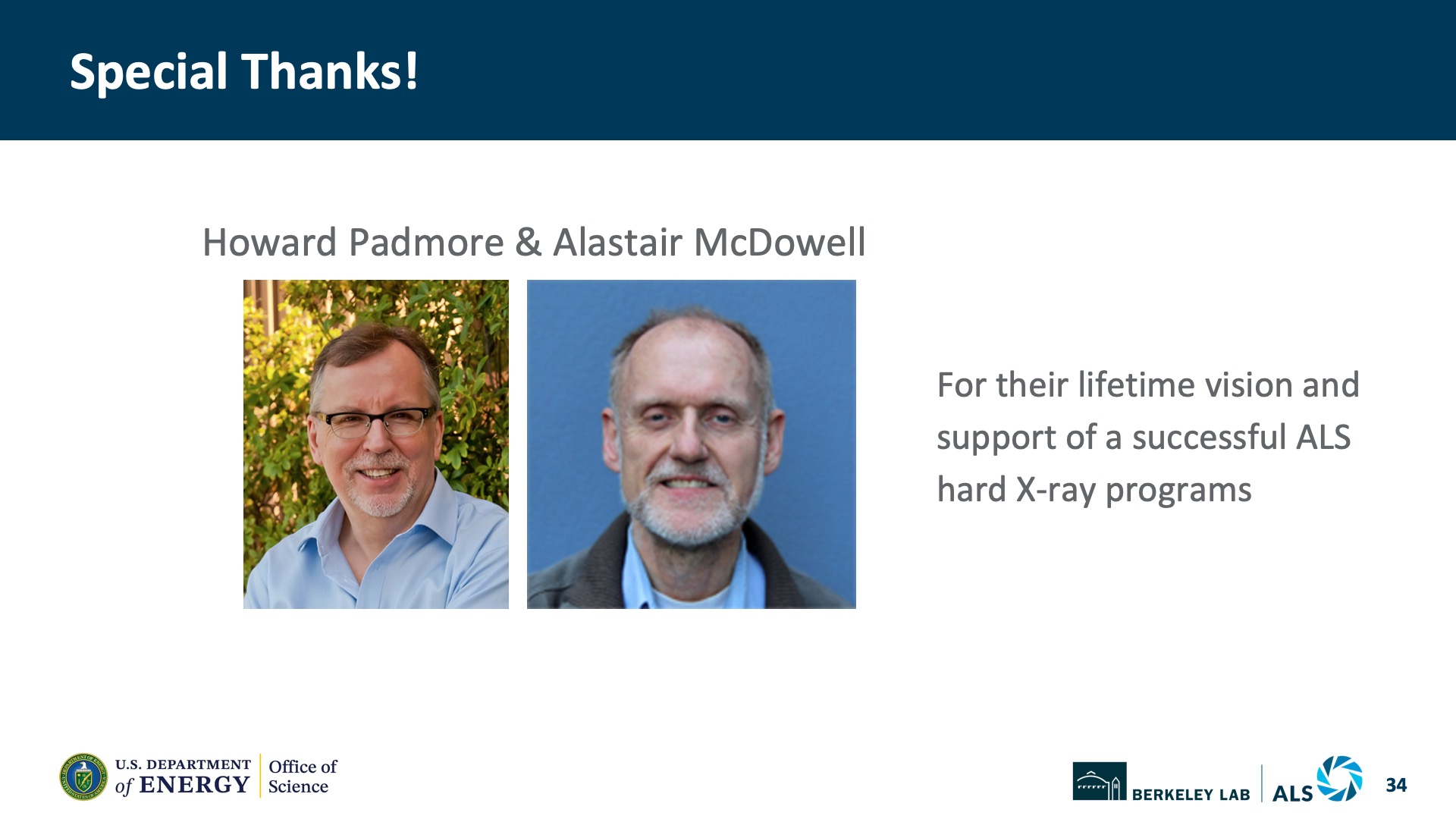by Cindy Lee
“We are three very different characters, working on three different techniques, but somehow we work together really well,” mused Martin Kunz. He and the other two characters in question, Nobumichi (Nobu) Tamura and Simon Teat, are the recipients of this year’s David A. Shirley Award for outstanding scientific achievement at the Advanced Light Source (ALS). The ALS Users’ Executive Committee selected the trio in recognition of their development of the diffraction program in Sector 12 at the ALS.
In speaking of their accomplishments, they credited the ALS environment for bringing together so many different personalities and skillsets. They have used their experience and knowledge to enhance the work of colleagues, users, and students, all the while learning, collaborating, and being inspired by new ideas.
Past lives and early career paths

Kunz began his academic career studying geology at the University of Bern, where he graduated with a specialty in mineralogical crystallography. Although many users go to Beamline 12.2.2 to explore geoscience topics with him now, his education did not immediately lead to a synchrotron career.
In fact, he said, “I have a pretty convoluted path that brought me to the ALS.”
After a crystal chemistry postdoctoral stint in Canada, Kunz moved to the Earth and Space Science Department at Stony Brook University. The geographical proximity and strong relationship with Brookhaven National Laboratory opened a new path.
“I got exposed to synchrotrons for the first time,” Kunz recalled.
Through countless hours of beamtime, Kunz developed the skills that led to his next position, where he built the very first high-pressure beamline at the European Synchrotron Radiation Facility. Kunz then returned home to Switzerland, first working as an assistant professor at ETH Zurich and then as a lecturer and a museum curator at the Natural History Museum in Basel. When the State of Basel could no longer fund the operation, Kunz pursued a new career and has been at the ALS ever since.
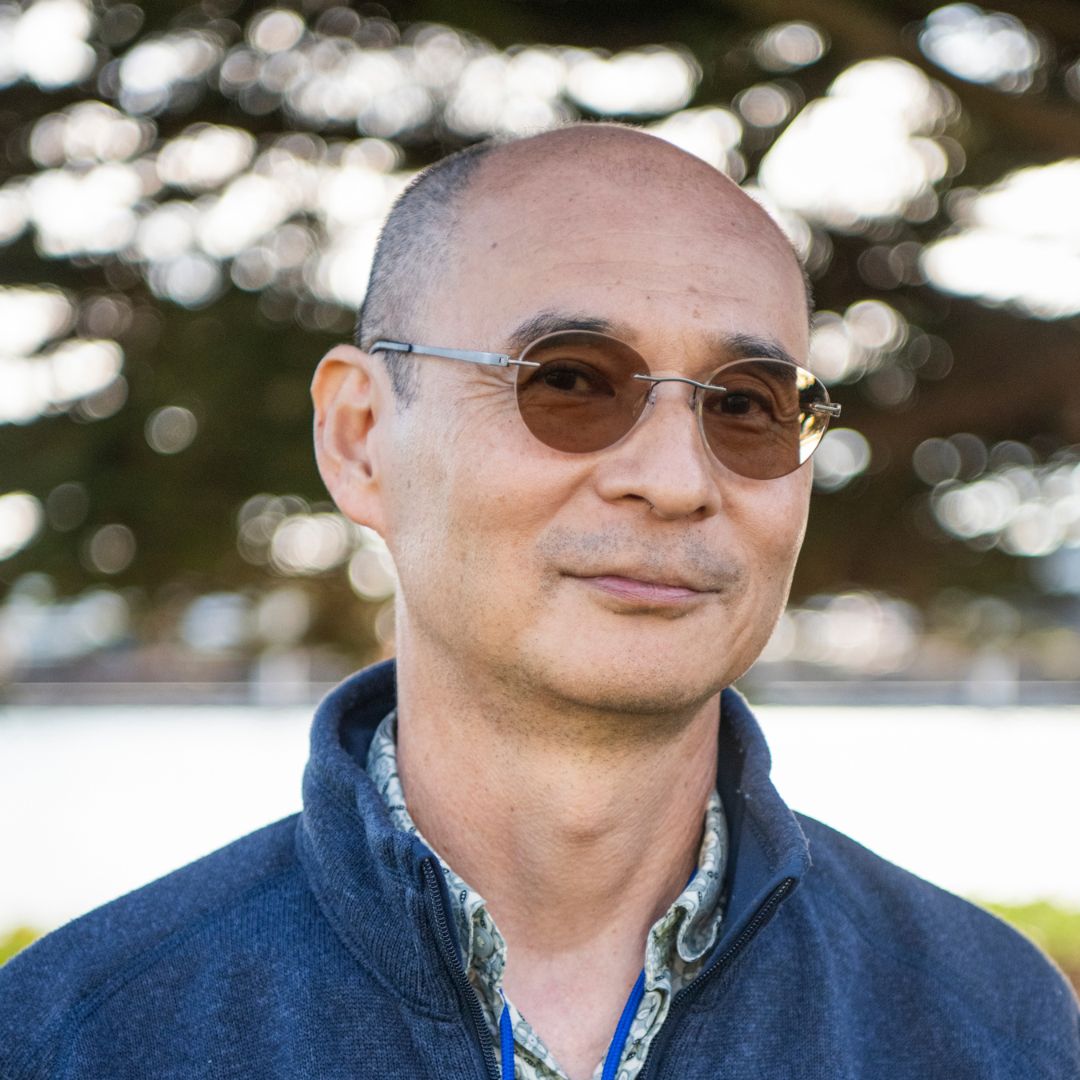
“Like Martin, I started in Europe,” said Tamura.
Tamura was born and raised in France, and his academic career is rooted in materials science. He studied the structure of quasicrystals and continued that research during a postdoctoral position in Germany as well as a postdoctoral position in Houston, Texas. The second postdoctoral position resulted in Tamura’s first synchrotron experiments—coincidentally, also at Brookhaven National Laboratory.
“That was my first contact with synchrotrons, and also contact with the beamline scientist job, calling them at something like 2:00 in the morning,” he chuckled. “Of course, now I’m on the receiving end of these calls!”
He then switched topics and moved to Oak Ridge National Laboratory, where he worked on the development of a new micro-diffraction station at the Advanced Photon Source (APS). This resulted in frequent travel to the APS as well as a new responsibility and interest.
“I was in charge of figuring out how to analyze the Laue diffraction patterns, all the data coming out from this beamline, actually, so I started writing software,” said Tamura.
His work garnered attention around the community. When the ALS began developing an x-ray micro-diffraction program as well, they recruited Tamura. He has built this user program, now housed at Beamline 12.3.2, from the ground up.
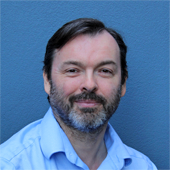
Hailing from yet another country and yet another scientific field is Simon Teat, who is from the United Kingdom.
Crystallography did not immediately enchant Teat when he had a class on the topic in university.
“It made no sense to me at all,” said Teat. “As far as I was concerned, I would never have to bother with it again,” he added.
It was when he took a position at Alcan International that his mindset shifted.
“One of my colleagues explained crystallography in a way that made sense to me,” he recollected. “From there, I moved to Warwick University to do my PhD in physics, but in truth it was very largely crystallography.”
As a postdoctoral fellow at Daresbury Laboratory’s Synchrotron Radiation Source (SRS), Teat began working in the type of crystallography that has become a hallmark of his career. He commissioned the first dedicated chemical crystallography beamline and advanced in the ranks at SRS. Upon the closure of SRS, he moved to its successor, Diamond Light Source, to lead the development of a replacement crystallography beamline. He was subsequently recruited to the ALS in 2006 to take over the single-crystal program, which originally was at Beamline 11.3.1. Then, Teat moved to Beamline 12.2.1.
“I actually applied for that job,” said Kunz, “but he beat me to it!”
There are no hard feelings, though. The ALS is a collaborative place, after all, and Kunz explained why his colleagues have had such an outsized impact.
“Simon’s passion is solving the crystallography puzzle, solving difficult structures,” he said. Users know they can rely on Teat for far more than data collection. “Like Nobu, he analyzes their data, and that’s why his beamline is so productive.”
Busy beamlines and cold cases
Combined, the three awardees have over half a century of beamline scientist experience at the ALS. Each joined the facility at the nascent stage of their respective programs and has steered the development and evolution of these user programs.
Over a decade of dedicated effort, retired ALS group leader Howard Padmore and his team—through developing new user communities, securing funding, and conducting exploratory experiments that later became full beamline programs—laid the foundation for these programs at ALS, with Tamura, Teat, and Kunz hired by Padmore to lead what would become a vigorous and internationally recognized initiative.
Today, Padmore can still rattle off their many achievements.
“They ‘grew up’ together at the ALS,” Padmore described. “There is also significant interplay between the methods these three developed together.”
He cited a remarkable statistic: around 8% of the total scientific output of the ALS comes from Beamline 12.2.1, which Teat runs. Teat has pioneered the measurement of how a gas or solvent interacts with nanoporous materials such as metal–organic frameworks (MOFs). He developed a gas loading cell for a wide range of temperatures and pressures in an environment that allows for state-of-the-art single-crystal diffraction on very small crystals.
“Of course all work in this area is collaborative,” Padmore said, “but it was Simon who pushed these developments and made them accessible to many user groups from around the world.”
One such user is UC Berkeley Distinguished Professor Jeffrey Long, whose research group has worked closely with Teat and his team on the challenging task of characterizing gas adsorption within porous crystals.
“Ultimately, Simon was able to improve the in situ gas-dosing capabilities of the beamline to a level that to my knowledge has not been achieved anywhere else in the world,” said Long. As a result, Long’s group published the first direct observation of CO, CH4, Ar, and P4 binding in a cobalt(II) metal–organic framework, elucidating the structures arising from diamine-appended MOFs used for carbon capture, and many other noteworthy findings.
Long related how Teat’s impact stretches beyond their deep-rooted collaboration. “Globally, numerous other groups have also benefited from these unique capabilities,” he said. “Simon is exceptionally dedicated to ensuring that the beamline is maintained in top condition for users to obtain the best possible data, and he is incredibly generous with his time.”
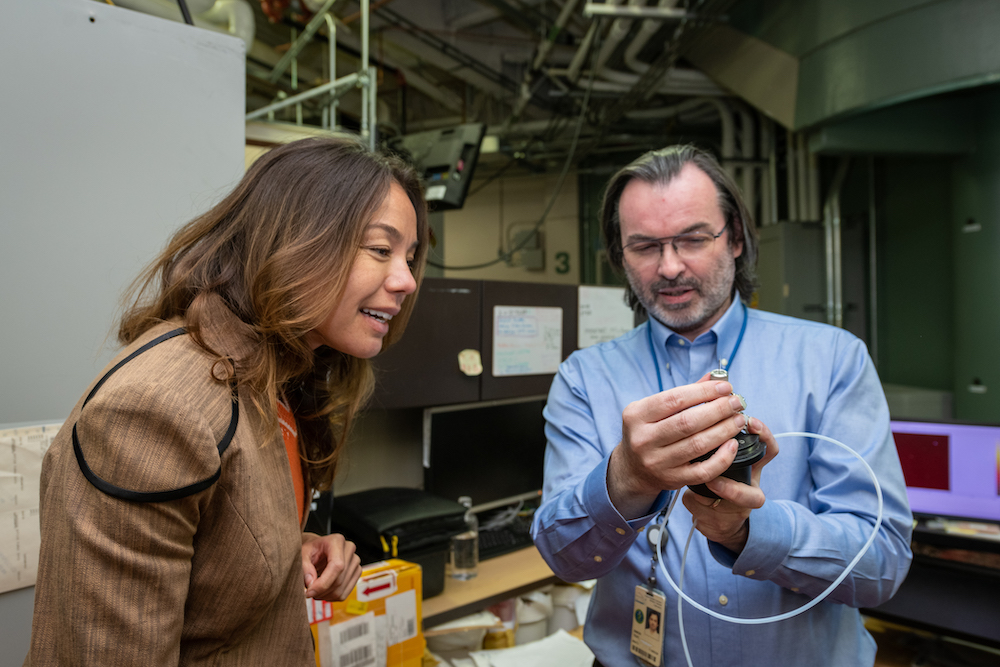
“The range and diversity of applications of Tamura’s scanning Laue x-ray diffraction (XRD) technique is really quite stunning,” Padmore said as he continued delineating the trio’s achievements.
Tamura originally developed the XMAS software in response to a critical need of the microelectronics industry. Interconnects in processors were failing after some time at operating currents, but the mechanism was not understood.
“The work that Nobumichi carried out led to an understanding that the failure was due to the mobility and agglomeration of defects driven by current induced stress,” Padmore explained.
Not only did Tamura’s work reveal a solution, he could apply his techniques to other areas of microelectronics, such as packaging, and subsequently to geoscience, environmental science, biomineralization, cultural heritage, and solid state physics.
Tamura’s work has been so impactful that a discovery has been named for him. A user, Andrei Barkov, was studying ognitite from a borehole in Central Siberia.
“Due to the small size of the grains, normal x-ray techniques could not be used, but it turned out that scanning Laue XRD was ideal,” said Padmore.
Once researchers understood that scanning Laue XRD could be a pipeline for characterizing previously mysterious minerals, they made many more discoveries. One of the new minerals has been recognized by the International Mineralogical Association as Tamuraite.
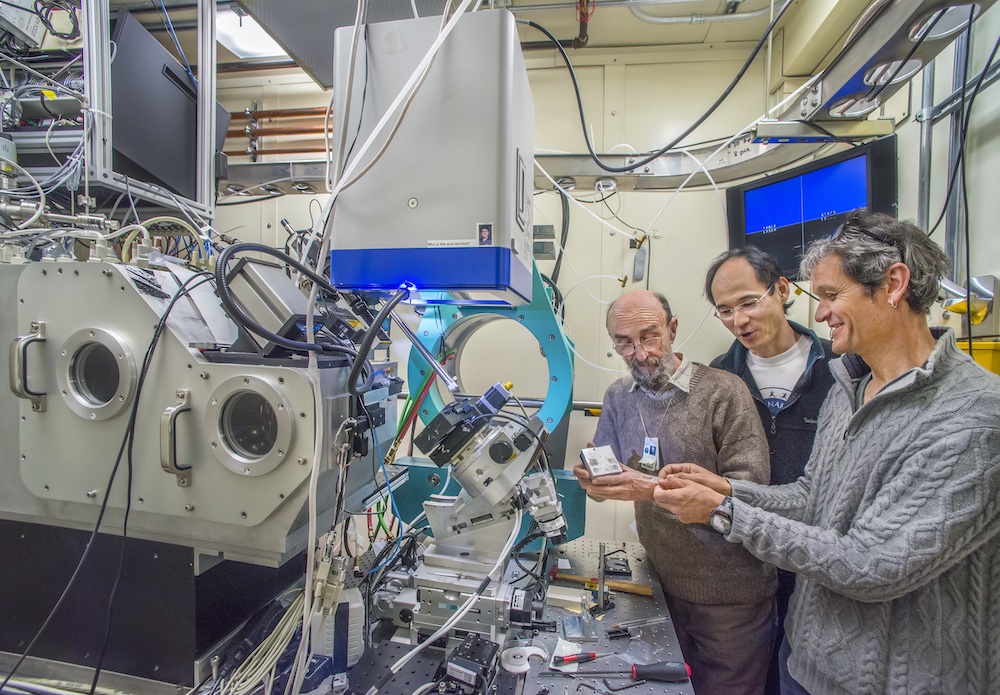
Work on minerals is one point of commonality between Tamura and Kunz. Kunz developed a technique to examine stress in mineral grains. He and his collaborators have applied this to a wide range of minerals that occur in the Earth’s mantle and core.
“This is of utmost importance to mineralogical and geodynamic interpretation of seismic information,” Padmore expressed, “because they could elucidate deformation mechanisms and preferred orientation patterns of rocks in the deep earth.”
Padmore went on to illustrate how Kunz grew the program beyond its geoscience roots.
“Martin has catalyzed a growth in energy science research on the beamline,” he said.
Together with colleagues from Lawrence Livermore National Laboratory, Kunz characterized a new method for producing Al-Ce alloys. High-pressure studies typically used either a powder sample or a single crystal, which did not provide information on the spatial distribution of phases as well. Kunz and the collaborators were able to gather this missing information by developing a new technique: multigrain single-crystal diffraction in the diamond anvil cell.
The production of Al-Ce alloys has historically been energy intensive. Kunz enabled the work to lower this energy requirement, an achievement that will benefit multiple industries. Al-Ce is a high-strength alloy with exceptional corrosion resistance and is an emerging new material with applications in aerospace, turbines, and engines.
“When Martin took over operation of this beamline, it was mainly focused on traditional high-pressure geophysics,” Padmore stated. “Through pushing several technical areas and through his own scientific interest, he has really broadened the application areas of non-ambient structural science.”
As Kunz and his team like to say, Beamline 12.2.2 covers everything from “deep Earth to deep space.”
At the 2025 ALS User Meeting, attendees were treated to a recap of some of Teat, Kunz, and Tamura’s favorite science stories from their respective beamlines. While the research varied widely, the theme they chose connected all the pieces. Below, you can review The X-Ray Files: Solving Science Cold Cases with X-Ray Diffraction.
Finding meaning while chasing discovery
“I have the impression that my career at the ALS has come full circle,” Tamura reflected. “I arrived sometime in 1999, and in 2001, I was invited to give a highlight talk at the User Meeting about my work on electromigration in interconnects. Now I’m back at the User Meeting 24 years later, receiving an award. It’s an honor.”
Kunz echoed Tamura’s appreciation for the award. “It feels very rewarding,” he said. “Hard x-rays at the ALS, which is designed as a soft x-ray synchrotron, are a bit at a disadvantage source-wise. Receiving the Shirley Award feels like a recognition of the ALS hard x-ray program, particularly the hard x-ray diffraction program.”
Through their diligent work, they have been able to carve a niche—one located in Sector 12. The work itself has also brought meaning and enjoyment.
“I liked the subject, earth science, and the combination of earth science and synchrotrons,” said Kunz about the early days at Beamline 12.2.2.
When his research areas diversified through working with users, he had even more to enjoy.
“I’m doing a lot of materials science, chemistry, and catalysis,” he explained. “Trying to understand this all myself, I find it fascinating.”
“One week, I work with people looking at seashells, and then the next week, we have perovskites or a tiny piece of moon rock from the Apollo 11 mission,” Tamura chimed in. “As a beamline scientist here, you become a jack of all trades.”
Both Tamura and Kunz consider the people they’ve met and worked with to be an important factor in their longevity at the ALS. They’ve encountered friendly colleagues and users, and they credit their users with keeping their work engaging. When users bring unfamiliar topics to them, they always rise to the challenge.
“It’s sometimes terrifying to have to learn something new on the fly,” Kunz admitted. “It also helps you grow and learn.”
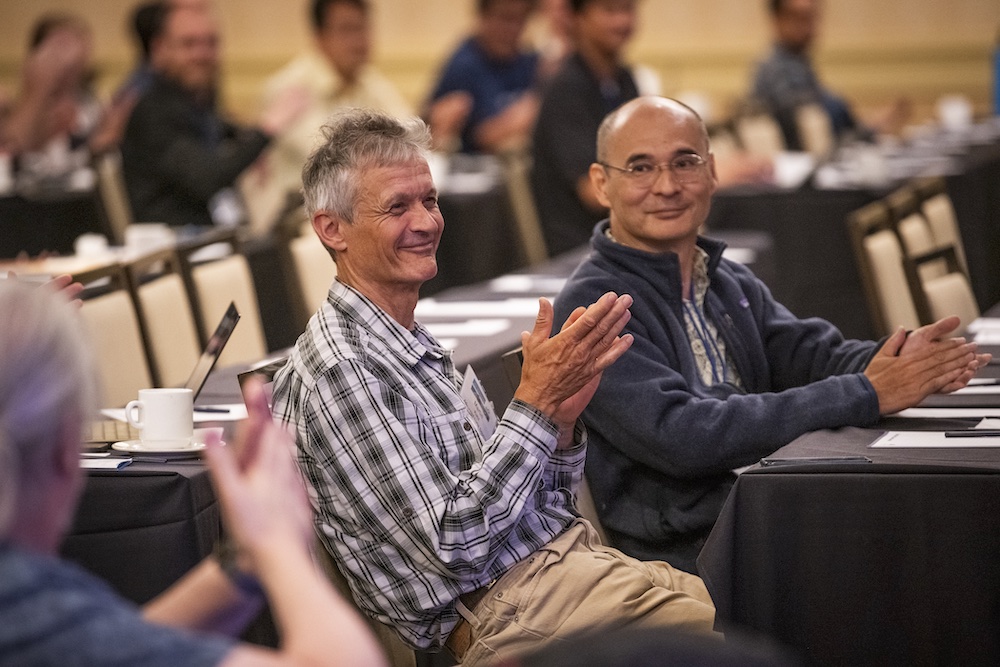
Interests beyond the beamline
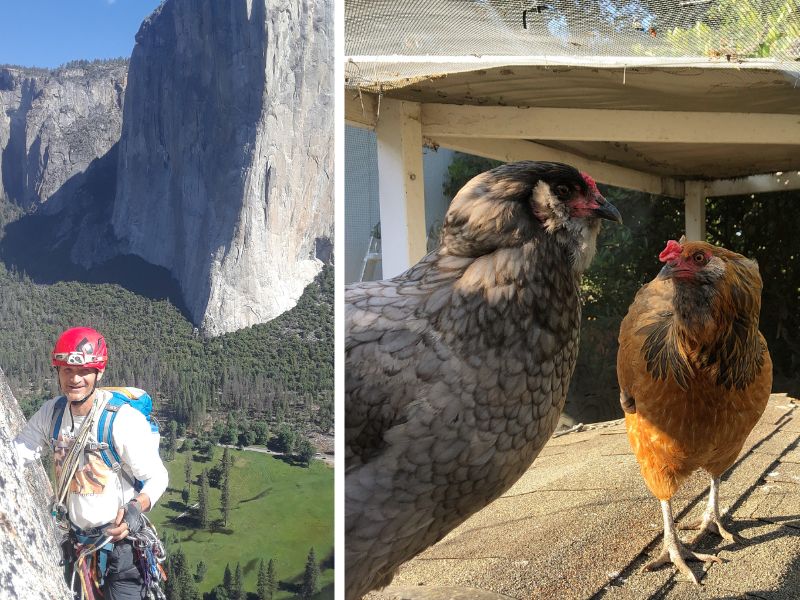
The breadth of research in Sector 12 is matched only by the breadth of interests these beamline scientists have away from work.
“Martin is climbing mountains,” Tamura joked, referring to Kunz’s Zoom background and favorite location.
“Yeah, I like to be outside, preferentially in the mountains,” Kunz agreed. “But I also like the coast, and I like camping, hiking, and climbing.” He also loves spending time with his family and the chickens they raise.

Likewise, Tamura also enjoys nature. ”But on the other hand, I’m also a paleo artist and a history buff. I like history in general, and archaeology in particular—ancient history,” he added.
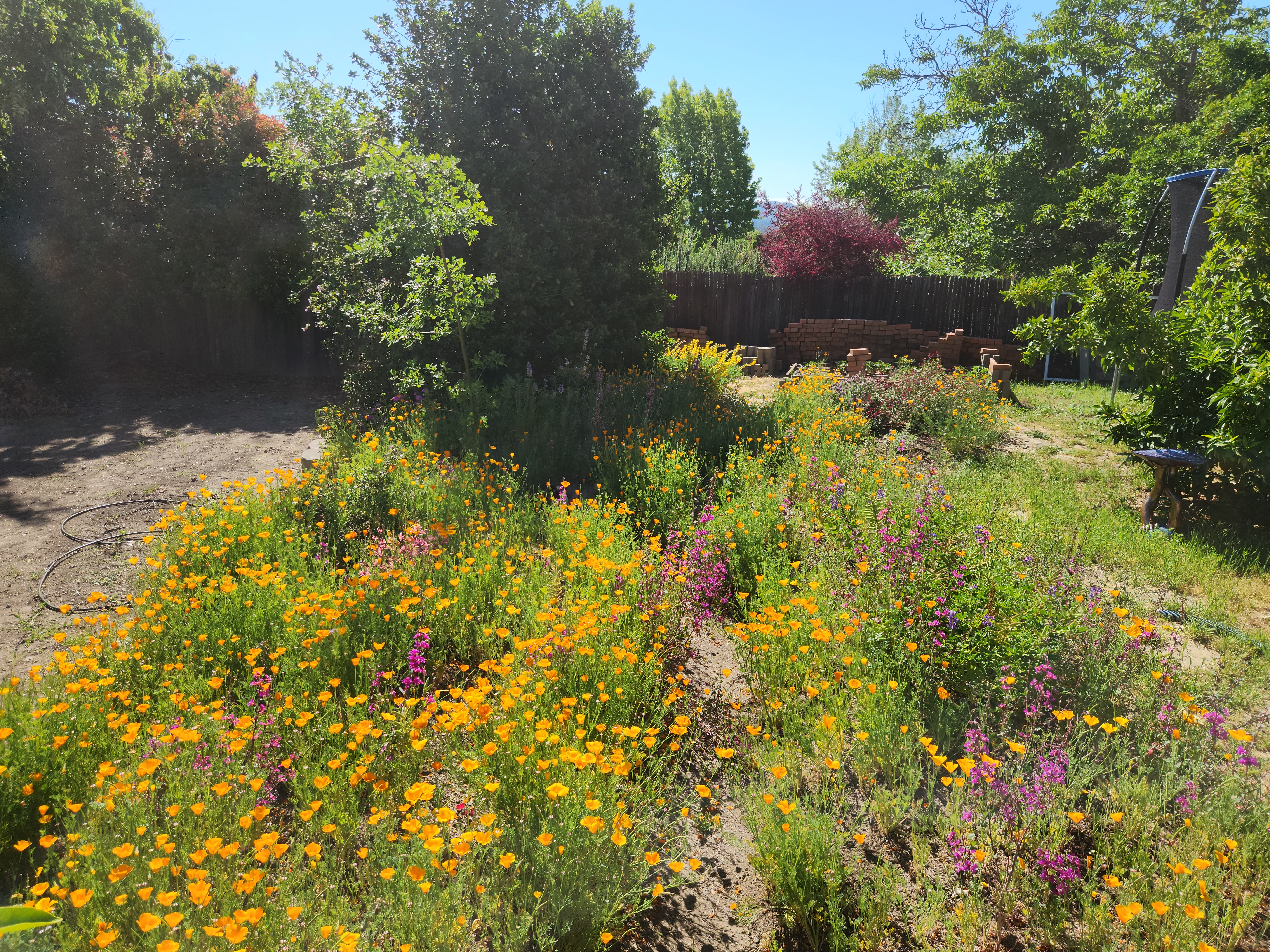
“I’m an enthusiastic amateur gardener,” Teat shared.
In a testament to their friendship beyond the beamline, Tamura and Kunz countered his modest statement.
“He’s a skilled gardener and grows his own native plants,” said Kunz. “He’s very particular, so it’s not enough to grow a California plant. It has to be from Contra Costa County!”
“I also got some plants from him, actually,” Tamura added. “They are thriving in my yard!”
Martin Kunz, Nobu Tamura, and Simon Teat have lively hobbies, finely-honed beamline acumen, and influence in a dazzling array of scientific fields. They epitomize the possibility and wonder of team science and are outstanding representatives of the Advanced Light Source.
The David A. Shirley Award was established in 1998 and recognizes the scientific contributions of researchers who are at least mid-career. David Shirley was a professor of chemistry at UC Berkeley and director of LBNL from 1980 to 1989, and was instrumental in having the Advanced Light Source built. He passed away in 2021.

































